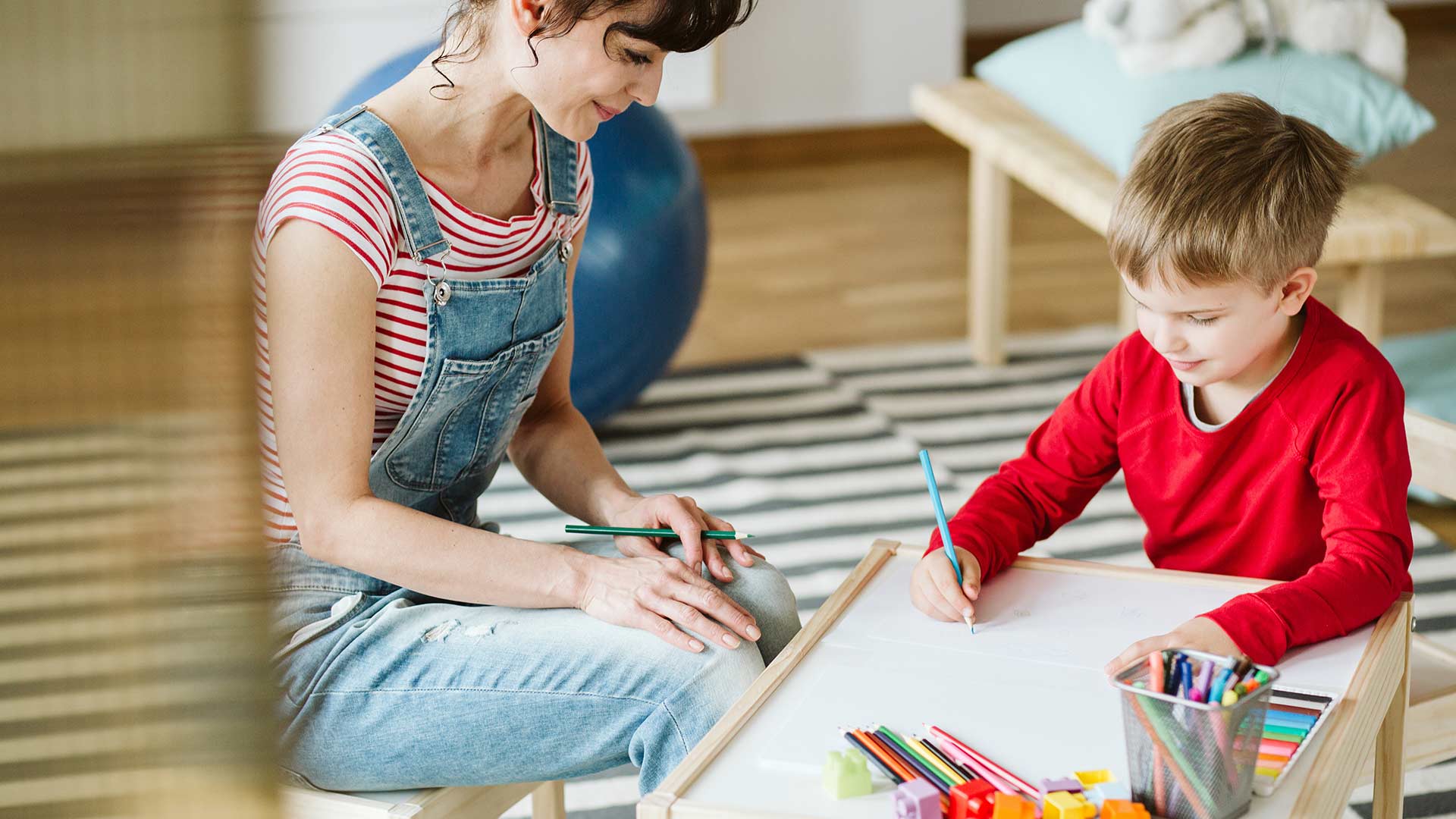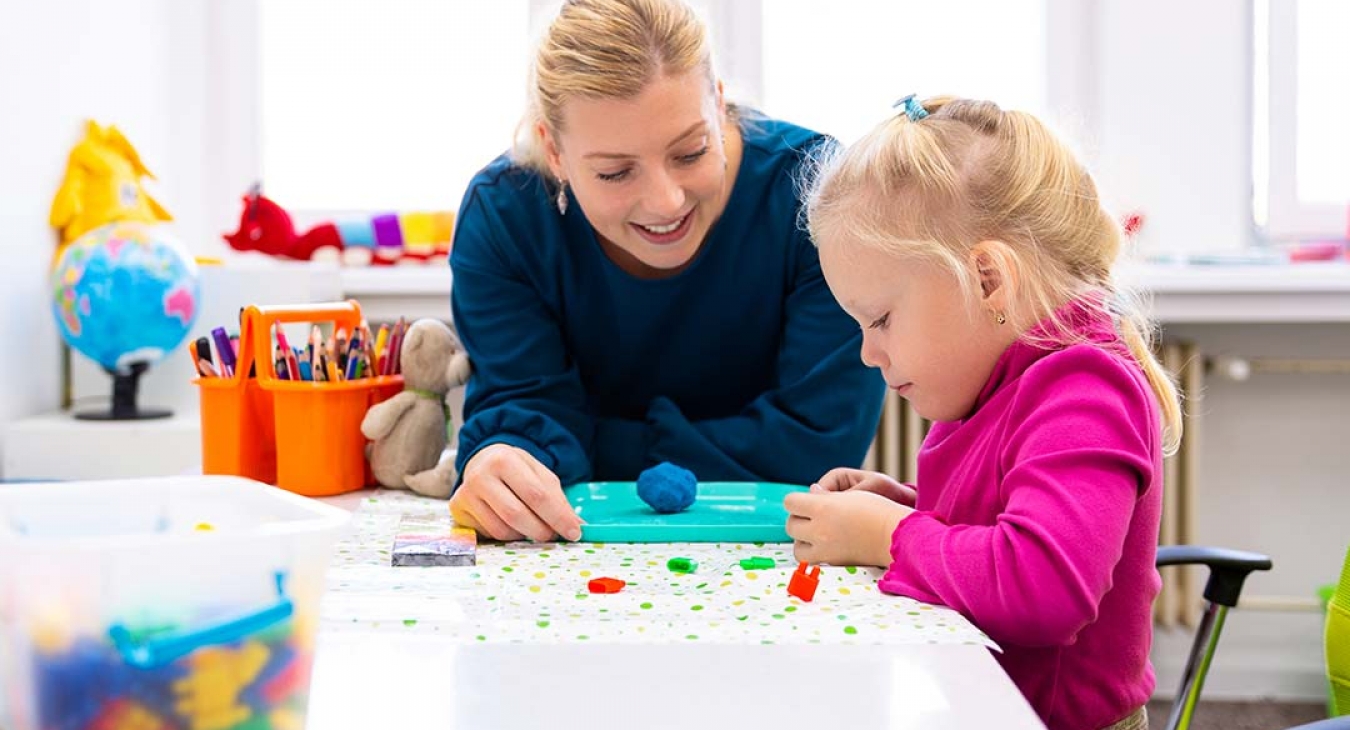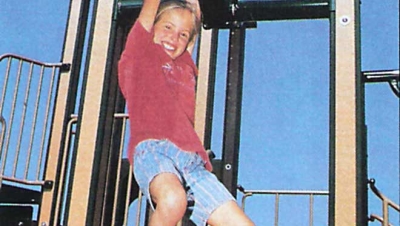Play is beneficial for children who are undergoing occupational therapy
Kids learn about the world through play. The benefits of playing are often overlooked, but they are there for any child to enjoy. Play is not always just a fun and silly activity. Research shows that it’s also a critical tool in a child's physical, mental, emotional, and social development.
Play is also beneficial for children with mental disabilities and those who are undergoing occupational therapy or OTS. Occupational therapy and play provide a tremendous opportunity for helping children regain their independence and improve their quality of life. Therapy helps children become confident and responsible members of the community.
What Is Occupational Therapy?
OTS helps patients who struggle with day-to-day tasks at home, in school, and in the community. It is a rehabilitation therapy to improve coordination, motor skills, and balance. Occupational therapists from hospitals or Connections Therapy Centers are also trained to evaluate patients and recommend appropriate treatments.
Common occupational therapy exercises include physical activities and games, fine and gross motor skills training, speech and language therapies, self-motivation, fine motor coordination, and socialization. All these activities have been shown to increase the patient's capacity to move around and accomplish tasks. Patients who participate in these exercises are also encouraged to practice their new skills on their own. It is important to take the time to practice your new skills every day with a buddy or by yourself.
For some children, physical therapy alone may not be enough. Children who have autism, cerebral palsy, or other physical ailments may need to evaluate their cognitive skills. A therapist can evaluate these children and determine if their motor abilities or sensory-motor skills are compromised. If this is the case, occupational therapy may be recommended.
Some therapy may be recommended to help children overcome their emotional difficulties and learn to deal with their symptoms. Occupational therapists can teach patients to understand and control their emotions. Emotional therapy can help children overcome fears and concerns associated with certain physical or mental illnesses or coping mechanisms for dealing with a change in the environment.
Occupational therapists can also help patients return to school to learn how to function properly when they have physical limitations. This can be done through occupational exercise classes, occupational therapy classes, and home visits. Occupational therapists can also teach patients how to develop self-care and management skills.
Occupational Therapy Techniques
Occupational therapy programs often combine individual and group therapy to meet the needs of each child. For example, an occupational therapist may work with a group of children whose symptoms may be very similar to an adult with an eye disorder or a hearing loss. In some cases, an occupational therapist may work with a family or a group of children who all suffer from a chronic illness or multiple sclerosis.
The occupational therapist's job is to identify the issues that hinder the patient's ability to do tasks and make suggestions on how to improve the patient's ability to perform those tasks. By helping the patient with these particular problems, occupational therapy will also make the child better able to interact with their peers. This is a positive way for them to learn to cooperate with others.
Importance Of Play In Children
Play is important for a child's development and growth. It offers both mental and physical stimulation. It helps babies to explore, develop, and grow. It gives them the chance to learn new things. It helps children learn how to communicate with their peers and the world around them.
It develops and encourages cognitive skills such as attention, focus, creativity, and memory. Play will help them develop their motor skills and fine motor skills. Play with their friends will encourage healthy interaction and communication.
Children also develop a sense of responsibility when playing. They can develop the values of kindness, respect, and fairness, all of which are essential as the child grows up.
A good occupational therapist understands the stages of child development and creates specific play activities accordingly.
Why Play Is Essential In Occupational Therapy
In occupational therapy, play is recognized as a central domain for children, and it is essential to help families connect with their children with disabilities. From birth until eight years, play is the window to the child's development. This is the reason why many therapists use play to achieve different developmental goals.
Here are four major reasons why play is a critical part of occupational therapy in children:
-
Used As A Reward
Many children perceive playing as a privilege. Many parents allow children to play only if they achieved something or as a reward for good behavior. This concept can be used in occupational therapy.
For some therapists, play can be used as a reward when children achieved something during the session. The Reward System is critical in occupational therapy because it helps motivate children to complete the tasks assigned to them. Play is also used as a reward for good behavior.
Children with ADHD or attention deficit disabilities benefit from using physical play as a reward because they have lots of excess energy. Motivating them to behave in certain situations so they can play to their heart's content later is a good way to teach them about the cause and effect of their actions.
-
Used To Improve A Wide Range Of Skills
Play is used by a therapist to gain attention and practice different skills like specific motor skills and functional skills. It is also used to promote sensory processing, cognitive language development, and perceptual abilities.
Play is mainly helpful in developing cognitive skills in children with disabilities. Cognitive skill development involves the building of learning skills like attention, memory, and critical thinking. Children with disabilities need to learn these skills to process sensory information and learn how to analyze, remember, and understand cause and effect.
Besides that, successful play engagement improves locomotion, hand-eye coordination, language, and social competence. Here are different plays that help children with disabilities learn skills:
-
Constructive Play – Developing Fine Motor and Cognitive Skills
Many children undergoing occupational therapy have a hard time handling objects with their hands. Therapists can use plays involving rolling play doughs with a rolling pin to make different clay shapes to facilitate hand use. Therapists also use Legos for children with autism.
Incorporating constructive play in therapy sessions help children develop their ability to express their imagination while exploring different sensory objects like identifying colors and shapes.
-
Pretend Play – Developing Imagination and Communication Skills
Therapists use pretend play to encourage children to communicate with them and with others. Simple pretend play activities like having a tea party or an alien invasion help develop children's imagination.
Therapists also use pretend play to improve a child's social skills. Some children are not comfortable playing with other children. Slowly introducing pretend play will encourage children with difficulties socializing to relate with others and learn to communicate with them.
-
Used As A Form Of Exercise
Play is an excellent way to encourage physical activities in children. Therapists use play to exercise children's bodies, and it also allows them to improve their motor skills. Physical play or activity also depends on the condition of the child.
Exercise helps to keep the immune systems healthy. Physical activity can help with a child’s mental health as well. When children are physically active, they are less likely to become obese, more likely to stay in shape, and less likely to suffer from depression.
For children with autism, physical activity helps them gain weight due to food aversions. Aside from that, their sensitivity to their environment makes participating in sports and other fitness activities challenging. With that, therapists would encourage them to start simple physical plays like swimming or running.
-
Used To Address Tactile Defensiveness
Some therapists would use play to practice or develop tactile defensiveness. Tactile defensiveness is the reaction that occurs when a child is sensitive to touch. The body has touch receptors all over the skin. These receptors feel pain, temperature, and texture. Children with disabilities have heightened tactile defensiveness that causes them to react violently or recoil even from the lightest touch.
Play can be used to address defensive tactile issues in children with disabilities. These activities help children understand that touching them will not harm them and control their emotions when they hold or touch something.
Finger painting is one of the activities therapists use to address this issue. Painting with hands and fingers helps children build tactile processions and encourage them to touch different textures while playing. During this play, children can also express themselves through their artworks.
Summary
Children enjoy play—that’s a fact, but it can also be a way for them to explore and learn. This is why play is one of the widely used techniques by many therapists. They make therapy sessions light and fun for the child.
Play is also a great way for parents to interact with their children. Therapists would encourage parents to play with their children even when they are at home to continue to learn different skills.
Therapists use play-based activities to facilitate positive growth and development in children with disabilities. Good therapists understand every child's needs and develop plans that will benefit them and help them function independently.









Add new comment